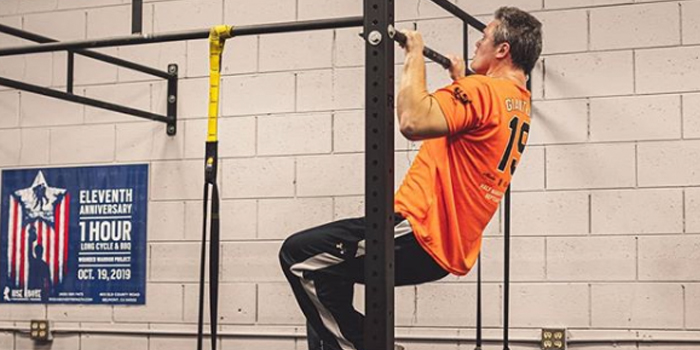
It's a sad state of affairs, realizing that your prime years of athletic performance are waving to you in the rearview mirror. All the fans, adulation, and hard work dissolve into weightless memories stored in the back of the mind waiting to be retrieved once a year at a friend's BBQ while ignoring the eye rolls your significant other displays.
Although aging is not the most tragic event in the world, many find themselves going through one or more stages of the well-known Kübler-Ross model: Denial, anger, depression, and acceptance. First, denial sets in, and our brains take much longer to accept the reality we live in. While our highly competitive sporting lives might be done, that fire takes longer to extinguish, and the brain refuses to give up hope. You may find your 35-year-old self believing you'll simply blow by a hungover college sophomore on a seam route only to have your hamstring twist up like a wet pair of jeans just five steps into your sprint. Our brain likes to remember fond times, even for the sake of our current reality.
RELATED: Train Your Closet Bodybuilder This Off-Season
Anger for the over-the-hill athlete is multi-faceted. You may be seething with the realization that today's young athletes are talentless wimps who aren't even worthy enough to hold your jock on their best day. You're angry knowing that your brain still tells you to perform like an all-star, but your body throws a coup d 'état resulting in physical pain and embarrassment that lasts for weeks. You realize how livid you are with the fact that all the years spent practicing your sport skills, training in the gym, sacrificing a personal life to be at the peak of athletic glory created a huge vacuum that left a void of athletic uncertainty and depression as you aged.
Don't create a mental tug-of-war between the person you were, the person you are now, and the person you think you should be. Instead, use that angry energy and channel it towards a path that benefits you in the long term, giving you the last laugh over any athletes before and after.
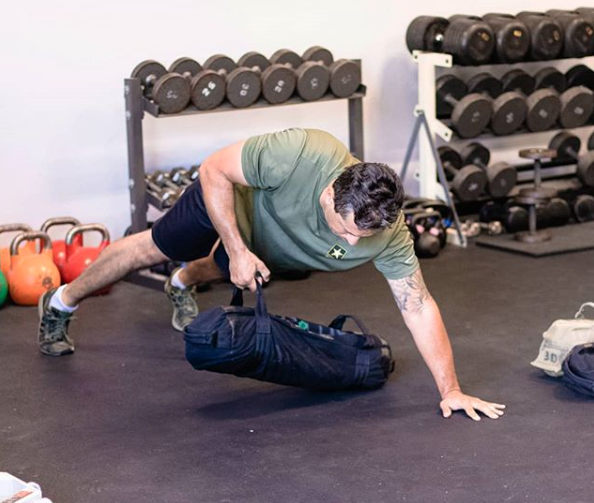
Upon trading in your uniform for a pair of chinos and being relegated to an evening armchair quarterback, yelling at the professionals between swigs of beer instead of Gatorade, you do have a decision to make. Stay on the current path and have people cock their heads sideways trying to imagine you as the shredded all-league hometown hero as constantly mentioned, or choose to fight the dying fire inside and shift those fast-twitch peak athletic years of your life into a slow-twitch pillar of health, fitness, and longevity.
Any athlete worth their salt has a degree of stubbornness and refusal to lose. We all can win and be that cool old guy who can still shoot a three, deadlift twice their body weight, and get the no way you are that old response when you drop the kids off at swimming lessons; it just has to be done correctly.
Below are some training considerations for someone looking to convert their I once was somebody into legendary status and win the long-game of life. Please keep in mind that I will discuss training at the gym as a form of exercise and enhancement for your future athletic ventures and overall health. These considerations will not necessarily apply to strength-based sports like powerlifting and Olympic lifting.
Mindset First
It's hard to accomplish anything if your head is not in the game. Luckily, we can incorporate all facets of training from the sporting world and convert it over towards our lifestyle goals. Early in your athletic career, focusing on specific tasks was simple; get better physically, and just win. As an over the hill athlete, those mountains to climb are not staring you right in the face. Sure, you might be able to get all Zen-like and be in the present moment and dive headfirst into a training routine and find success. However, without setting goals, success can be short-lived, and your once athletic prowess goes by the wayside.
By slightly altering the competitive endgame into three tiers, you keep the big picture in sight.
The three ways to look at your training from now on are:
- Long-term goals
- Short-term goals
- Daily accomplishments
Long-term goals will most likely always remain the same: Health, fitness, and the ability to accomplish anything you want physically, at any age, leaving no doubt that you earned The Ultimate Bad-Ass title.
Short term goals will be ones that you set for a few months out. These give your current training focus and something to strive for. These can be anything from losing a few pounds to competing in that adventure race in the summer. Set those reasonable goals and then construct your training program around achieving them.
Daily accomplishments are the ones that are more flexible and dependent on what your day looks like. In your youth athletic career, your day was primarily on autopilot: School, sports, and social life, where showing up was 90 percent of the battle. The afterlife turns into a convoluted mind field with the feeling of being pulled in multiple directions; the need to prioritize your tasks becomes necessary.
Now you have to schedule the simplest things like when you eat, sleep and train. Have a list of the daily tasks, write it down and make sure to include a few hours to yourself, including training. If training is scheduled, it will less-likely become an afterthought, and you will be less inclined to ride that slippery slope into the sedentary has-been abyss.
Schedule Flexibly
Have the mindset to commit to daily training sessions. Rest days are important, but not scheduling them might be more important for long-term success.
The young athlete, whose only responsibility was to show up to training, earns a rude awakening when they mature as reality grabs hold and smacks them repeatedly with the multiple responsibility stick. Obstacles have a way of popping up, and they don't care if you are supposed to bench press in 30 minutes. If you schedule to train daily and something comes up, you have options to get everything in. You can change the training time from the morning to the evening, change the workout you were planning to do by making it shorter, or switching it completely by moving deadlift day to a quick kettlebell circuit in the garage. If your schedule gets nuked, then oh well, today is your rest day.
Frequency Over Volume
In our athletic glory days, our only job was to train one to two times a day for multiple hours with games and tournaments on the weekends. With older age comes more responsibility, and we have to rethink how we execute our training programs. One of the biggest pitfalls is trying to maintain that athlete training schedule. Keeping up with the peak athlete training volume is a quick way to make things worse. You either can't keep up or if you do, other areas of life are neglected, creating extra stress that will come full circle and eventually impact training and recovery.
The over-the-hill athlete benefits by adjusting training sessions to be more frequent, require less time, and have a distinct plan for that training session. With quality focus on exercises and skills designated for each day, training becomes much easier to fit into your busy daily life and to maintain as a long-term lifestyle.
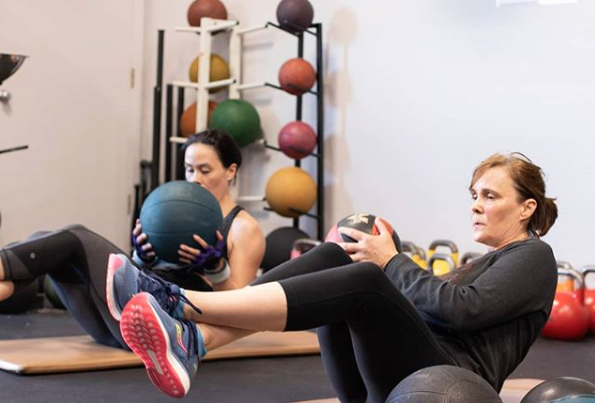
Change the Way You Train
Congratulations, as an over the hill athlete, you are now your coach, and if you are not a bodybuilder, weightlifter, or powerlifter, you have the luxury to be freer in the weight room. Now don't get all crazy and start curling in the squat rack but definitely explore new training options.
To be compliant with the frequency over volume principle, ditch the specific body part training days. Not only do they take more time to complete, but you will also be in a constant state of soreness and walking like a cowboy in the office. Body part splits don't mix well with the schedule flexibility aspect either. If you can't make it to the gym because you forgot about the stuffy dinner party your significant other told you about three months ago, then leg day is not happening, and now everything is pushed back.
The over-the-hill athlete should focus on balancing the body with their goals in mind. Are there lifts that are important to you and need to be in the rotation? Please keep them in. Are there weaknesses you have accumulated due to years of playing your sport, which can become potential problems down the road like strength imbalances, a weak core, or limited flexibility? Add some necessary single-leg exercises like lunges and step-ups, foundational core movements like planks and band rotations, and start with some joint mobility and finish with some static stretching.
One of the physical elements that go quickly and are hard to get back if neglected are dynamic exercises. Where strength seems to last longer and is quicker to return as we age, the factors that affect our ability to sprint and jump move on like a scorned spouse never to return.
I realized that about 10-years after my competitive career, I could not jump over a wet puddle, and one of my pet peeves is wet socks, so I decided I need to add more jumping and light plyometric training. Explosive work keeps your nervous system primed, and your muscles able to take the physical stress of that weekend basketball tournament without both the embarrassment and rehabilitation of a blown-out calf.
MORE: 12 Exercises to Build Massive Triceps for Your Bench Press
Remember the days of jumping out of bed on a Saturday an hour before kickoff, suiting up, and springing directly into action? Today you probably feel more like a rusty tin man, rolling out of bed, oscillating your hips in several different directions, trying to lubricate the joints, or waiting for relief from the crack of the spine.
Years of high-level sports take their toll on the body, and all those small injuries accumulate and tighten up our fascia, muscles, and joints. A key component for long-term health and being the over-the-hill athlete is the ability to move well. Unless you were religious about proper warm-up and recovery work in your youth, chances are your hips and low back are a little tight and possibly unequally in their ability to move.
Adding some daily mobility and stretching is essential, and the best way to do it is by making it a part of your workouts. Mobility first is a great way to warm up and get you ready for your big lifts. Decided to squat today? Get those hips mobile by getting into a bottom squat position and lightly prying the knees open with your elbows while you shift your body side-to-side. Going to press? Get a band and rotate those shoulders smoothly in all directions imaginable.
At the end of your workout or end of the day before bed, a little bit of stretching goes a long way, especially if you intend to get up the next day feeling energized. Stretching out glutes is essential for keeping the low back happy and your leg training progressing. Also, think about stretching the upper back. Combat that rounded back position created from hours of desk work, driving, and being hunched over your phone swiping right by lying on with your shoulders on a stability ball and opening up your chest by pulling the back of your hands towards the floor.
The beauty of this newfound athletic freedom is the ability to try new sports and new training programs in the gym. Tired of all that Olympic lifting you did in college? Substitute the dynamic exercises using kettlebells. Did you think that bodyweight exercises were only reserved for the grade-schoolers and military boot camp attendees? See if you were wrong by adding more pushups, pullups, and challenging exercises like handstand progressions into your training.
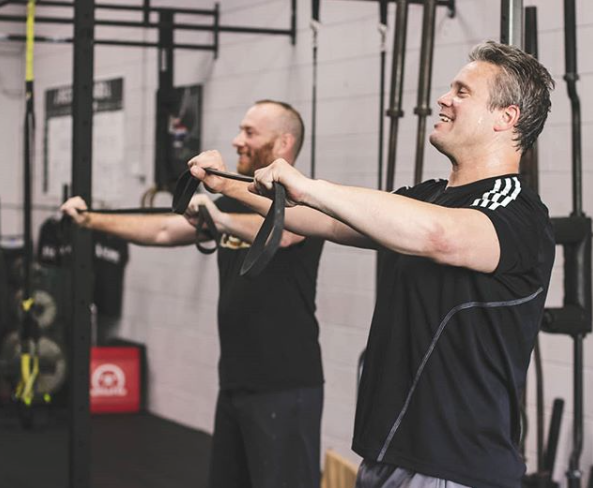
Putting It All Together
Programming your gym training can be simple as having a general template and working off factoring in all the principles discussed.
Plan on doing some physical activity daily. If life gets in your way, then you can change the activity you were planning on doing or call it a rest day.
Two to four days in the gym is a good amount, and the other days you can run, hike, play your sports, or try that hot new fancy fad workout. Your program should change with the seasons. If you are in the middle of winter and your sport season is done, spend more time in the gym. If it's spring and summer, get outside more, play a recreational league sport, and get your activity there.
Gym workouts should take 30-60 minutes and can be structured something like this:
Day 1
A1) Mobility
B1) Upper body warm-up exercise
B2) Lower body warm-up exercise
C1) Military press variation
C2) Lower body agility or power exercise
D1) Core work
D2) Single-leg exercise
E1) Stretching
Day 2
A1) Mobility
B1) Upper body warm-up exercise
B2) Lower body warm-up exercise
C1) Squat variation
C2) Back exercise variation
D1) Core work
D2) Arm training
E1) Stretching
Day 3
A1) Mobility
B1) Upper body warm-up exercise
B2) Lower body warm-up exercise
C1) Chest press variation
C2) Lower body agility or power exercise
D1) Core work
D2) Single-leg exercise
E1) Stretching
Day 4
A1) Mobility
B1) Upper body warm-up exercise
B2) Lower body warm-up exercise
C1) Deadlift variation
C2) Pull up or back exercise variation
D1) Core work
D2) Shoulder or arm exercise variation
E1) Stretching
It's All About Feelings
You don't have one foot in the athletic grave just yet, and there are advantages in being an older athlete. Most young athletes got by on youth, talent, and determination and may not have given their performances a second thought. Sure, your skill, strength, and explosiveness may have slightly declined; however, you can still be a successful athlete by utilizing wisdom and experience gained along the way.
Behind those catchy 80s action movie one-liners, your brain has stored countless data about your physical well-being under certain performance circumstances. If you tap into that data and recognize the signals your body emits, you can really maximize your training effectiveness for the long haul.
Let's say you set foot in the gym and figure out that your main lift is going to be lower body focused. How are you feeling that day? Do you think squats or deadlifts might serve you better? Did you deadlift hard two days ago and now its time to squat, but your hips are stiff and putting a barbell on your back might send your low back into a convulsive revolt? Maybe double kettlebell front squats are the answer for that day. Are you not feeling like moving the iron at all? A simple bodyweight routine with mobility, pushups, pullups, planks, and jump rope intervals will keep you off the couch and headed in the right direction. Your body inevitably sends you constant feedback in your best interest, so don't ignore it.
Don't let your ego cloud your better judgment to get that epic lift for social media likes only to be incapacitated for the coming week. Keep your three goals at the forefront of your mind. Train every day in a variety of ways until random responsibilities set you back momentarily, then quickly get back on course. Listen to what your body is telling you and how it is steering you towards success. You are well on your way to being the person those high school kids hope to be when they are your age.
Doug Fioranelli is the owner of Rise Above Performance Training®, where he uses progressive programming for athletes, first responders, and all willing adults. Since 2001 he has worked with a wide variety of athletes ranging from middle school athletes to Olympic and professional athletes. Follow his gym on Instagram and sign up for his monthly email newsletter.










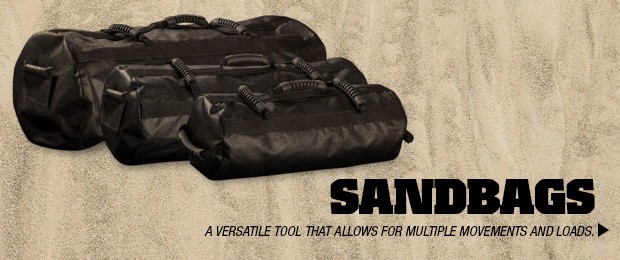
#fitmind #fitbody #fithealth4u.